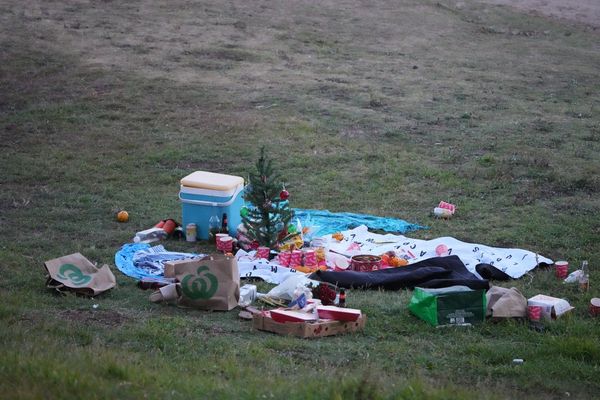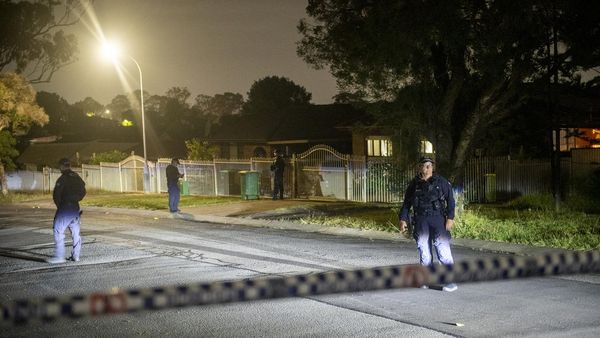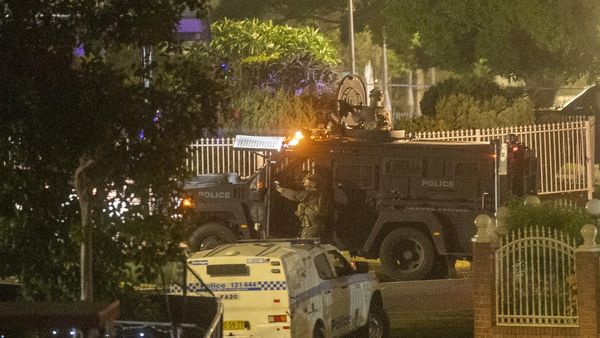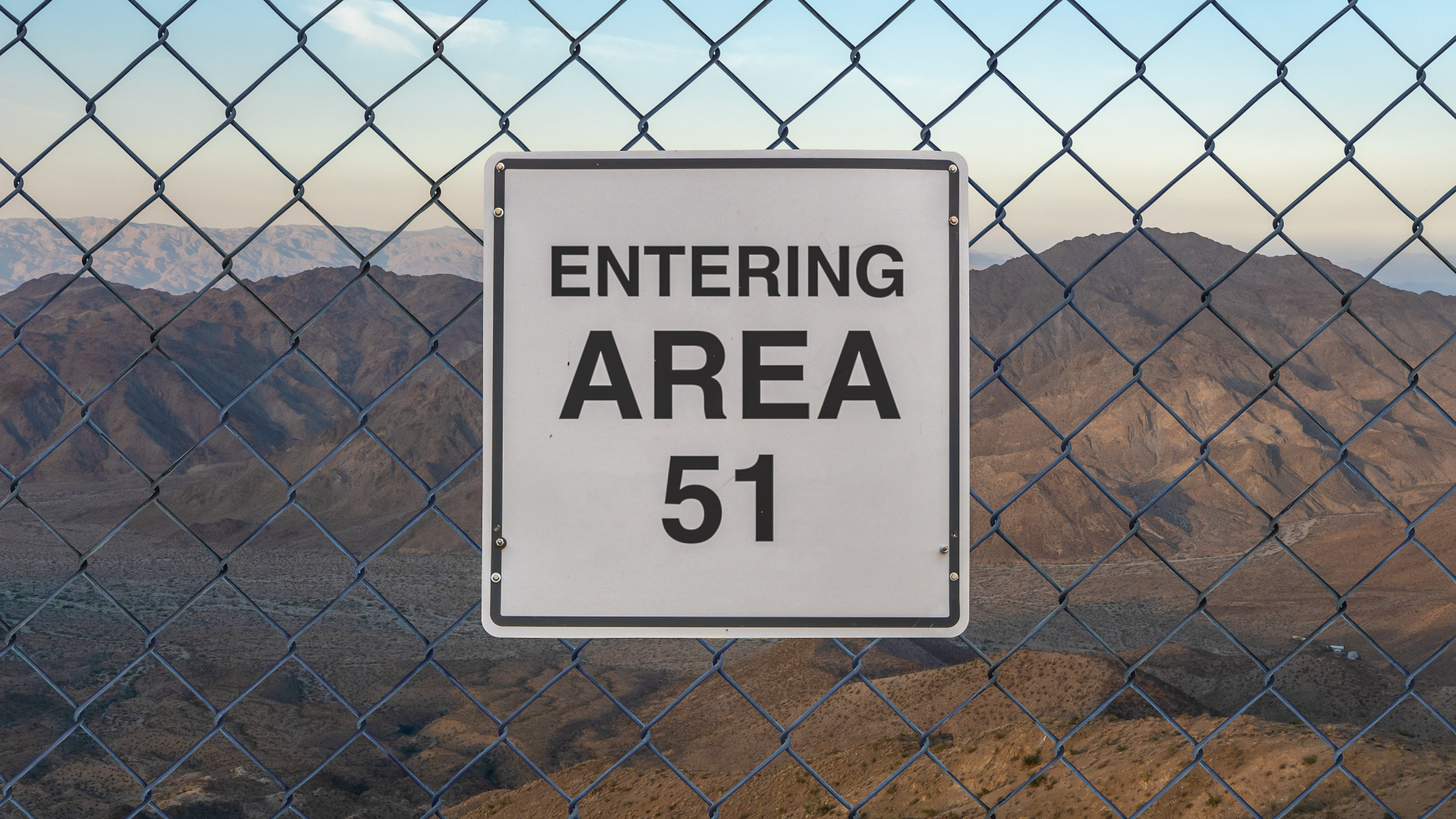
Area 51 is a top-secret military installation in southern Nevada that has long been the subject of speculation, secrecy and stories of unidentified flying objects (UFOs) and alien technology.
Located in the remote desert near Groom Lake, Area 51 has become infamous for conspiracy theories suggesting that it houses alien spacecraft and conducts experiments away from the public eye. While these theories have captured the imagination of the public and pop culture for decades, the real purpose of Area 51 is likely more down-to-earth — though still shrouded in mystery.
Related: The search for alien life
What is Area 51?
Area 51 is part of the Nevada Test and Training Range, located around 120 miles (200 kilometers) northwest of Las Vegas. The base was established in 1955, initially to support the development of the Lockheed U-2 spy plane, and has since hosted testing of several classified aircraft.
The name "Area 51" comes from its designation on Atomic Energy Commission maps. It was also referred to as "Paradise Ranch" to attract workers in an attempt by aerospace company Lockheed (now Lockheed Martin) to draw employees to the base.
Today, the base and the wider Nevada Test and Training Range complex are part of the Nevada National Security Site (NNSS), with the CIA referring to it as the Groom Lake and Homey Airport. Satellite imagery of the base, once restricted, has been available on platforms like Google Maps since 2018.
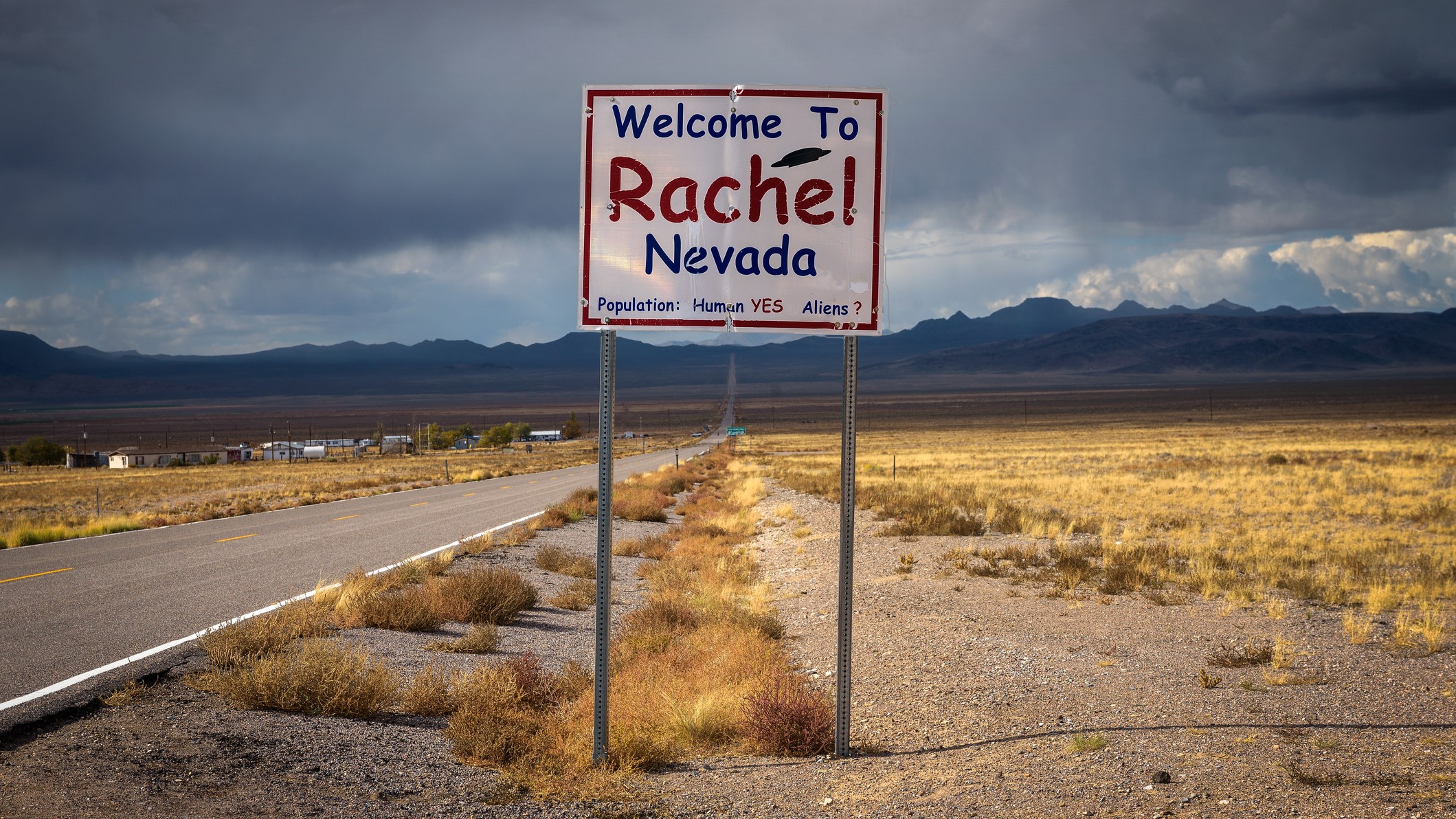
Despite being widely referenced, "Area 51" is rarely used in official documentation. According to Benjamin Radford, a science writer and UFO skeptic, the term is mostly a media and conspiracy theorist invention.
"The base itself is fairly small, but the restricted area around it is over 90,000 acres [36,000 hectares] — partly to prevent prying eyes and partly because they need to test classified aircraft," Radford told Space.com. "It's mostly conspiracy theorists and media who call it Area 51. To the U.S. government, it's simply the Nevada Test and Training Range, part of Edwards Air Force Base."
What is in Area 51 and what is it used for?
Area 51 has served as a development and testing ground for some of the most advanced and secretive aircraft in U.S. history. In addition to the U-2, aircraft like the SR-71 Blackbird, A-12 Archangel, and F-117 Nighthawk stealth fighter were all tested here.
In 2013, the CIA declassified documents acknowledging Area 51's existence, specifically in relation to the U-2 program. These files were obtained by the National Security Archive through the Freedom of Information Act request.
While the base's primary mission is likely the testing of classified military technology, its association with UFOs and extraterrestrials persists, in part due to its air of mystery and tight security.
Gallery: Declassified US spy satellite photos & designs
Is Area 51 connected to UFOs and extraterrestrials?
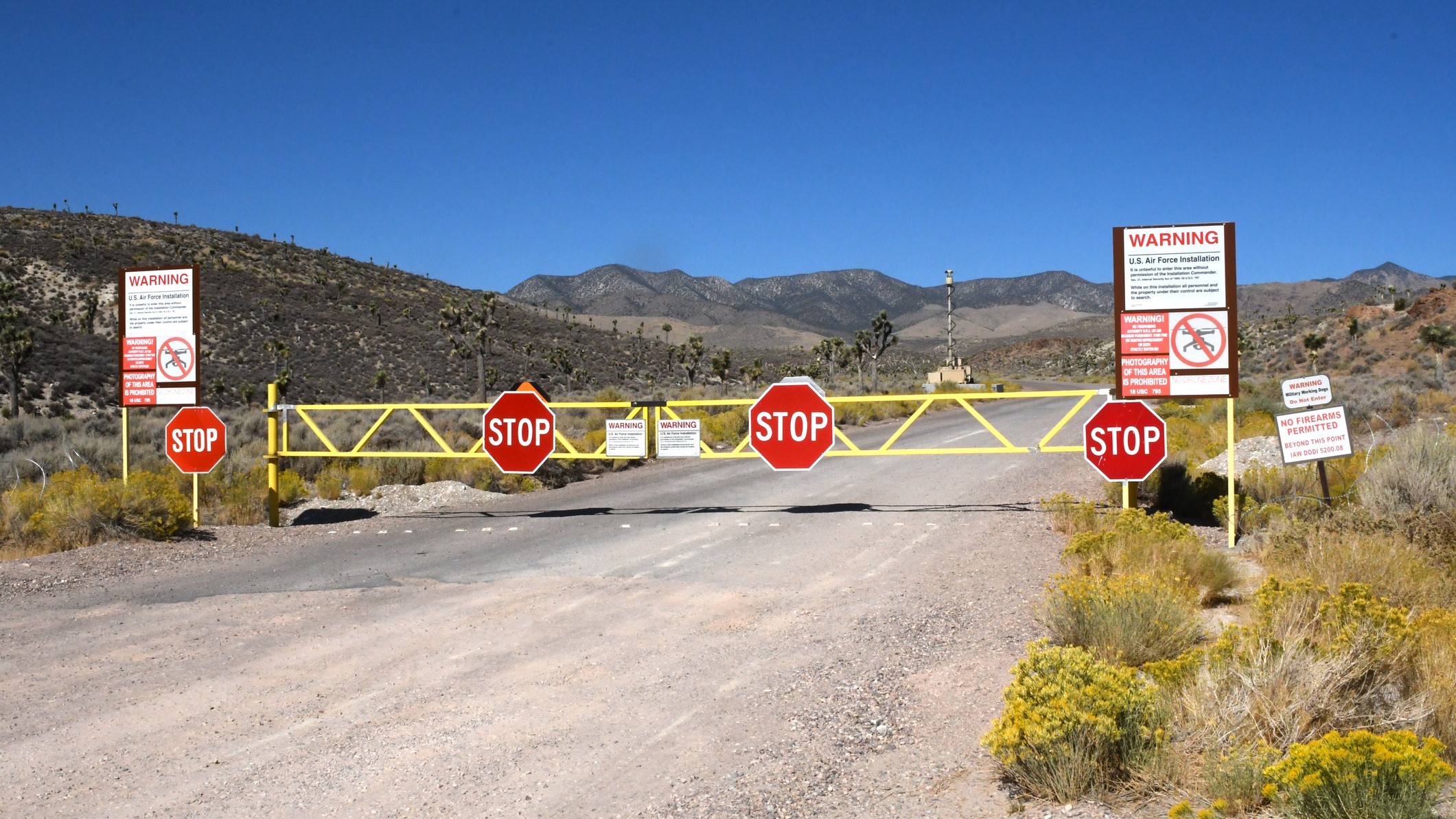
Yes — at least in the public imagination. The testing of new and classified military aircraft is likely the main reason for the association between Area 51 and UFOs. It's important to note that the term "UFO" refers to any unidentified flying object, not specifically alien spacecraft, despite its common portrayal in pop culture.
"It's true that strange lights and aircraft can sometimes be spotted in the area, so it's an obvious leap to UFOs, but of course, new aircraft might look identical," Radford explained. "The basic, flawed premise behind the Area 51 mythology can be boiled down to this: The government won't reveal what's going on there, so it must be something ultra-super-amazingly secret."
What we call Area 51, he added, is only one of many military bases, national laboratories and government scientific research centers across the country that deal with classified — even Top Secret — information, and where workers and visitors need security clearances.
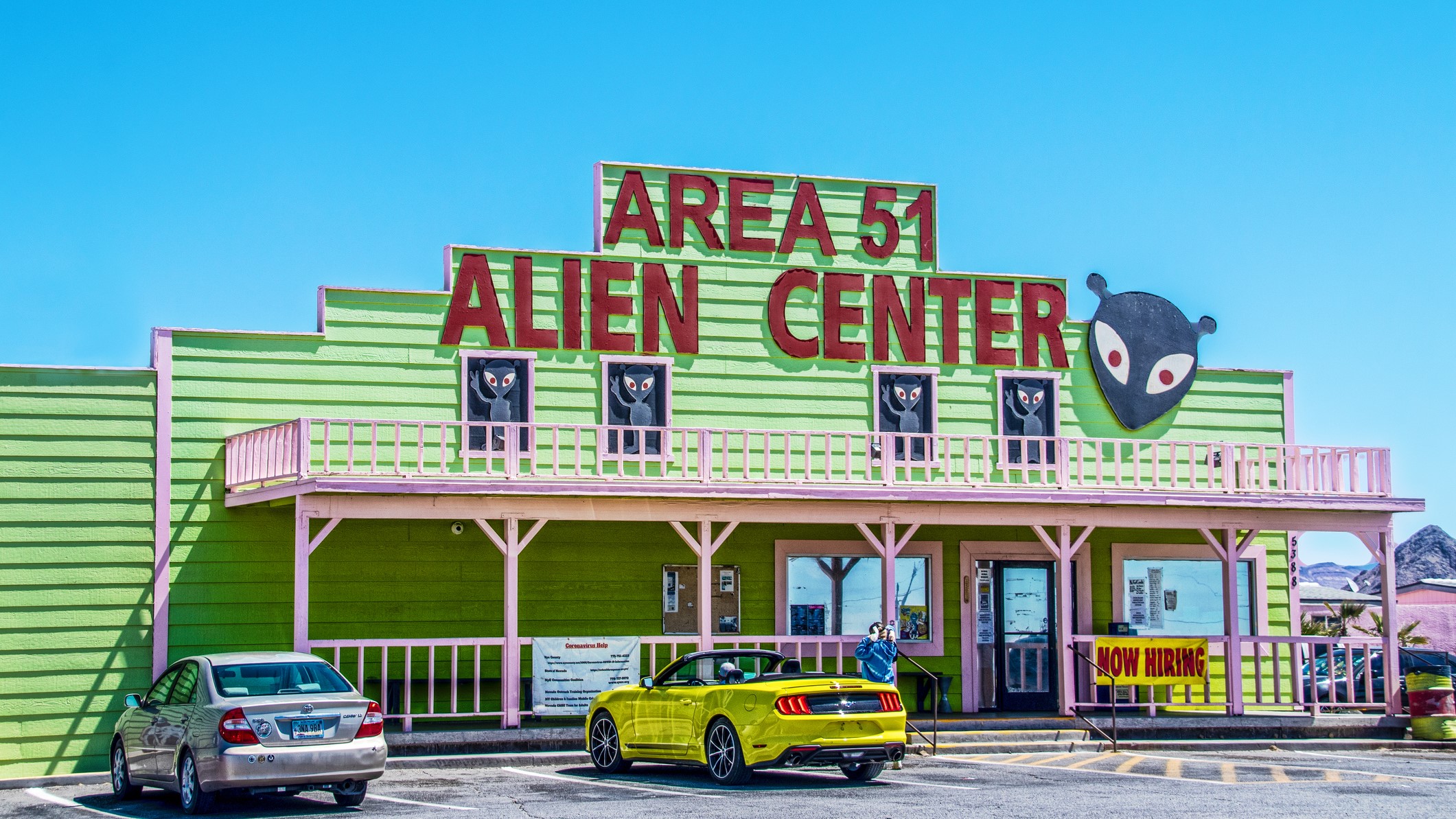
"There's no reason to think that anything UFO-related is going on," Radford said.
Aside from the sightings of strange craft, Area 51 mythology was enforced in 1989 when a man named Robert Lazar claimed that he worked on extraterrestrial technology inside the base.
Lazar told Las Vegas television reporter George Knapp that he had viewed autopsy photographs of aliens inside Area 51 and that the US government used the facility to examine recovered alien spacecraft. Lazar himself was discredited, but his claims resulted in numerous government conspiracy theories, most of which involve extraterrestrial life.
"A lot of the legend has been fueled by hoaxers like Robert Lazar, who appeared in the 1980s telling a story to TV stations that he worked there and saw alien bodies and crashed flying saucers first-hand," Radford recalled. "It got a lot of attention, but it was later revealed that he fabricated not only his employment at Nellis [Air Force Base in southern Nevada] but indeed his entire background. Almost nothing of what he said was true."
Lazar had set the ball rolling, however. No matter how fallacious the rumors of alien tech and Area 51 were, the connection was cemented into the public consciousness and pop culture.
Related: UFOs and UAP: History, sightings and mysteries
Why is Area 51 so secretive?
Area 51 's secrecy stems from national security. It remains a Military Operating Area, meaning that photography, surveillance, or unauthorized access is strictly prohibited.
According to Radford, the base is equipped with buried motion sensors, patrols and camera surveillance. Signs warn that deadly force is authorized. The base itself isn't fenced, but its borders are marked with clear warning signs and orange poles.
"It's not just about keeping aliens hidden — it’s about maintaining operational secrecy for national defense," Radford said.
Security analysts suggest the need for secrecy relates to protecting cutting-edge aviation projects, drone testing, radar evasion systems, and possibly hypersonic flight programs.
How is Area 51 protected?
Area 51 is protected by intense security infrastructure:
- No-fly zone: Civilian aircraft are prohibited from flying over the base
- Restricted access roads: Only authorized personnel can enter
- Surveillance technology: Includes radar, cameras and motion sensors
- Military presence: Security forces patrol the area and can detain trespassers.
Violating these boundaries can lead to fines, arrest, or worse. The base's security posture is comparable to other sensitive defense installations around the world.
How does Area 51 tie into modern UFO disclosure efforts?
In recent years, the U.S. government has taken unprecedented steps in disclosing information about Unidentified Aerial Phenomena (UAPs). In 2021, the Office of the Director of National Intelligence (ODNI) released a report acknowledging 144 UAP sightings by military personnel — many of which remain unexplained.
Area 51 is not mentioned in the report, but public interest in UAPs has reignited curiosity about the base and its possible involvement.
How does Area 51 compare to other top-secret military bases?
While Area 51 is the most famous, it's not the only U.S. base dealing with classified technology:
- Wright-Patterson Air Force Base (Ohio): Allegedly received wreckage from the Roswell incident.
- Dugway Proving Ground (Utah): Sometimes called the "Area 52" of biological and chemical testing.
- Tonopah Test Range (Nevada): Also part of the broader Nevada National Security Site. The vast area of flat terrain is ideal for rockets and low-altitude, high-speed aircraft operations.
All of these locations are shrouded in secrecy, but none have the same cultural mystique as Area 51.
Area 51 in pop culture
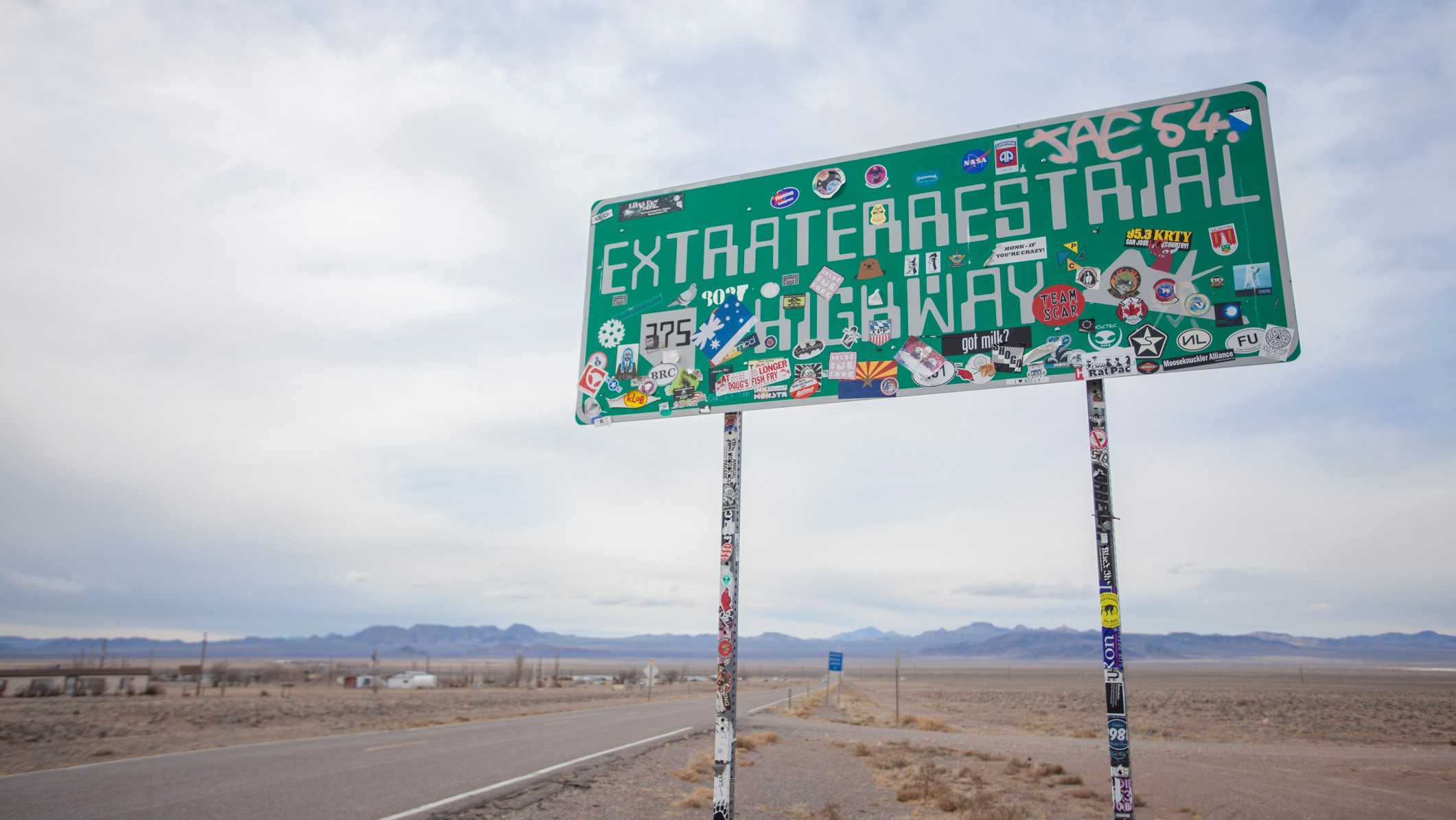
In addition to numerous documentaries about Lazar and the Area 51 UFO connection, the base has become a popular setting in fictional movies and TV shows.
One of the most notable portrayals of Area 51 is in the 1996 blockbuster "Independence Day," starring Will Smith. Directed by Roland Emmerich, this film grossed over $817 million worldwide and features the base as a pivotal location in humanity's fight against an alien invasion.
On the small screen, Area 51 was host to a special prisoner in a 2011 episode of "Doctor Who." The time-traveling Doctor was held captive at the base during the sixth-season episode "Day of the Moon."
Given the fact that it is a show based on aliens, conspiracy theories and government cover-ups, it's little wonder that Area 51 eventually made it onto "The X-Files." In the 1998 season-six episode entitled "Dreamland" — also an early name given to the base — Mulder and Scully witness the flight of a mysterious craft at the facility.
And Area 51 became part of the Marvel Cinematic Universe in season seven of "Agents of Shield," appearing in two episodes of the show and getting a mention in a third. The base was also mentioned by Spider-Man antagonist J. Jonah Jameson's publication The Daily Bugle in a series of video packages as part of the viral marketing for the film "Spider-Man: No Way Home" at the end of 2021.
The Storm Area 51 movement
In 2019, what started as a prank on social media almost got very out of hand when 3.5 million people expressed interest in attending an event organized by 20-year-old Matty Roberts, a student from Bakersfield, California.
The name of the tongue-in-cheek Facebook event was "Storm Area 51, They Can't Stop All of Us," and, as the name suggests, the supposed plan was to charge at the base in large enough numbers to overwhelm security. The aim was to uncover putative secrets like alien technology and secretive research.
In the end, an estimated 6,000 people made it to the low-key summer event and partook in some activities like hatchet-throwing and drinking limited-edition alien-themed Bud Light beer. Area 51's light security was not challenged, however.
"It began as a joke, but some people took it seriously and began planning to actually … well, it's not clear what, but hang out near the entrance and have fun," Radford said. "The tiny town of Rachel braced for huge crowds and a music festival that never happened."
"It was a huge fiasco, a smaller-scale Fyre Festival for the alien crowd," he said.
Additional resources
Explore the history of the U-2 spy plane program with Lyon Air Museum. Read more about UFO hoaxster Bob Lazar with How Stuff Works. Discover the many Area 51 pop culture references in this YouTube video from KTNV Channel 13 Las Vegas.
Bibliography
Area 51 Fast Facts, CNN, [2021].
Area 51, Military.com.
Area 51, 37°14'06.0"N 115°48'40.0"W, Google Maps.
Area 51, Britannica.
Explore the conspiracy theories surrounding Area 51, Britannica.
Independence Day, The Numbers.
Doctor Who, Season 6 Episode 2, Day of the Moon, IMDB.
X-Files, Season 6 Episode 4, Dreamland, IMDB.
Area 51, Marvel Cinematic Universe Wiki.
Storm Area 51: The joke that became a 'possible humanitarian disaster,' BBC News, 2019.
Frank. A., "Storm Area 51" weekend had neither raids nor aliens. But it wasn't a bust," Vox, 2019.

